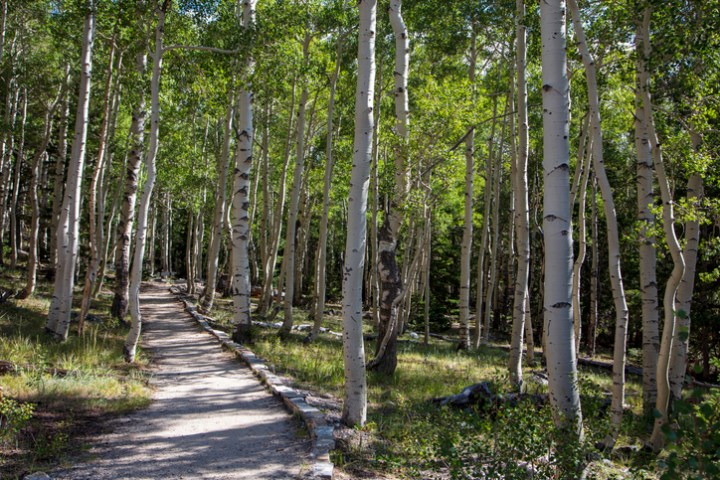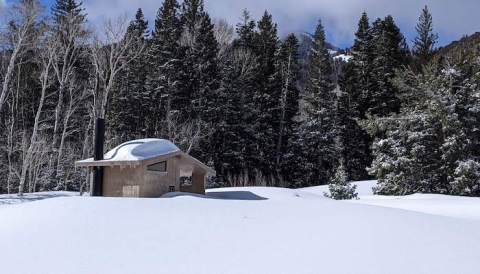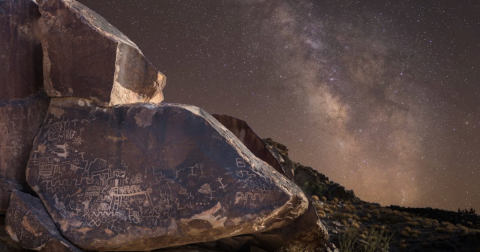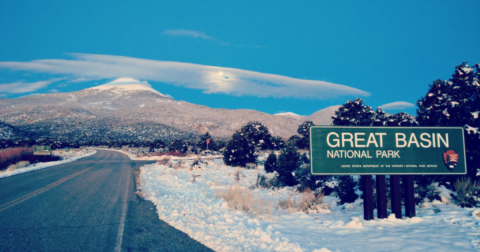The Ultimate Guide To Nevada’s Great Basin National Park
Protecting 77,180 acres of the Great Basin Desert and the South Snake Mountains, Great Basin National Park is one of Nevada’s best-kept secrets. Where towering peaks and valley deserts collide in east-central Nevada, a breathtaking landscape full of unexpected beauty awaits. Surprisingly, Great Basin National Park is one of America’s least-visited national parks, receiving only 144,875 visitors in 2021.
The desert climate can be harsh and unforgiving, but there are majestic mountains, awe-inspiring caves, plentiful wildlife, scenic drives, and incredible hiking trails that make this park a must-visit. It offers landscape and wildlife diversity far beyond what many people expect. You won’t hesitate to add Great Basin National Park to your travel bucket list once you read through this in-depth guide designed to reveal the beauty and mystery of this stunning natural wonder.
What Makes Great Basin National Park Special?

Lehman Caves was declared a National Monument by President Warren G. Harding on January 24, 1922. Approximately 64 years later, in 1986, the national monument and the surrounding areas were designated a national park, thanks largely to the advocacy efforts of late-Congressman Harry Reid. Combined with the adjacent Highland Ridge Wilderness, Great Basin National Park protects a massive 227.8 square-mile geographic area of wildlife habitat and the remote basin lands of eastern Nevada.
How To Get To Great Basin National Park

Great Basin National Park is open year-round, although Wheeler Peak Scenic Drive often closes during the cold months whenever ice or snow is present. Before you plan your trip, note that weather conditions within the park can change rapidly, especially during the winter, spring, and fall seasons, but be prepared for the heat in the summertime. Always bring plenty of water because the only potable water is found on the north side of the Lehman Caves Visitor Center during the winter. But the nearby town of Baker will have any amenities you may need if you happen to run low or forget anything.
Entrances
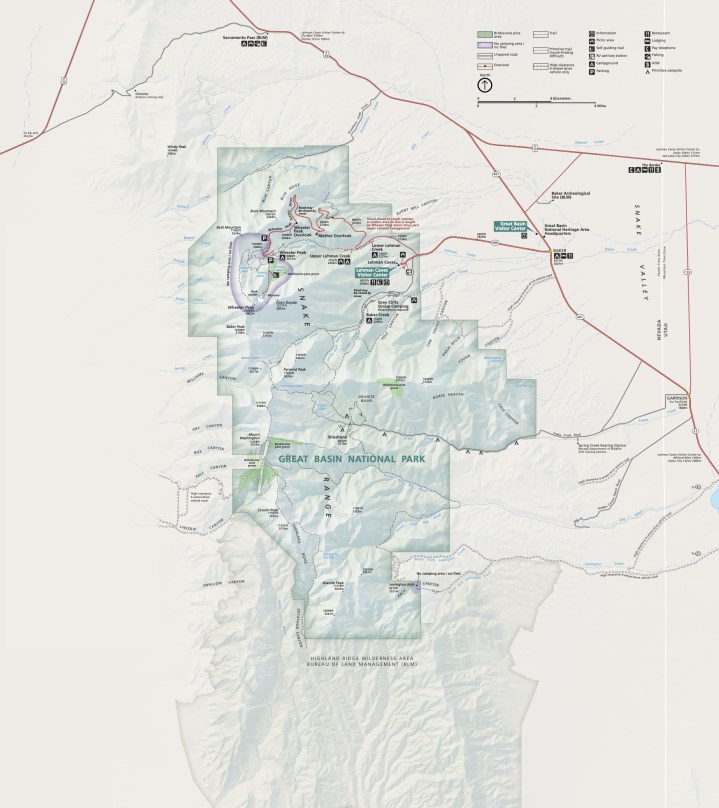
The most common and recommended access point to Great Basin National Park is via the town of Baker, Nevada to the east of the park, just under 300 miles north of Las Vegas or 225 miles southwest of Salt Lake City, Utah. From Baker, take NV-488 West into the park towards the Lehman Caves Visitor Center. If exploring dramatic desert and mountain landscapes away from crowds is the adventure you desire, you’ll find that — and more — at Great Basin National Park.
Visitor Centers, Hours, And Fees
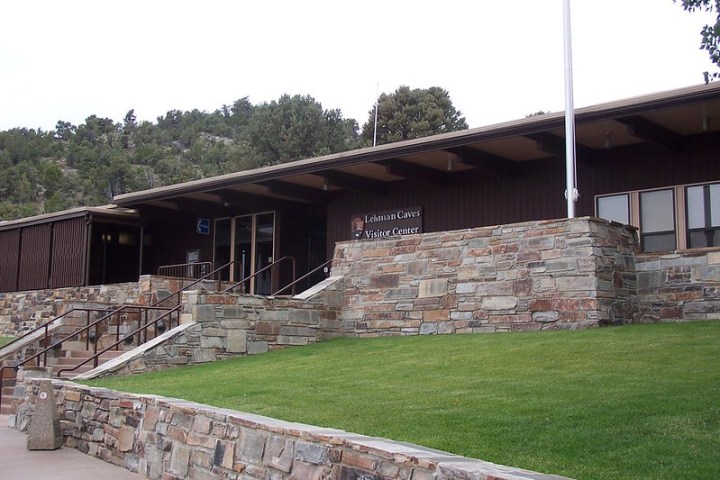
One of the best perks of visiting Great Basin National Park is that there is no entrance fee! Lehman Caves Visitor Center is open year-round (with the exception of major holidays), with hours ranging from 8:00 AM to 5:00 PM seven days a week during the summer, and closing between 4:00 and 4:30 PM during all other seasons. Here, you can purchase tickets to ranger-led tours of the Lehman Caves, but due to the popularity of these tours, it’s recommended that you purchase cave tours up to 30 days in advance.
Additionally, the Great Basin Visitor Center is located outside of the park, just a few miles north of Baker, but is typically closed from late October through mid-May. Operating hours are seven days a week from 9:30 AM to 5:00 PM except for major holidays and off-season closures. This visitor center is a great starting point to get a feel for the park’s varied offerings by walking through the exhibit hall or watching informative park movies.
Best Time To Visit Great Basin National Park

The best time to visit Great Basin National Park is late spring into early summer if you want to experience everything this amazing park offers. Temperatures are most pleasant and the weather conditions are generally the calmest for camping and hiking this time of year. You’ll likely have warm weather, but not the extreme heat that can sometimes be experienced in late summer. You’ll likely find wildflowers blooming at higher elevations, and blue skies with a few stray clouds are typical. Afternoon thunderstorms are possible in the summer months but are usually brief.
Summertime is also when all the exciting Lehman Caves tours are offered, whereas certain tours are not offered during the colder months. Wheeler Peak Scenic Drive is a drive you cannot miss out on, and another perk of visiting the park in the summer is that this road is unlikely to close due to adverse weather conditions. Whatever time of year you choose to visit, you’ll still want to pack extra layers, as temperatures can still plummet in the desert valleys overnight.
Where To Stay In Great Basin National Park
Camping
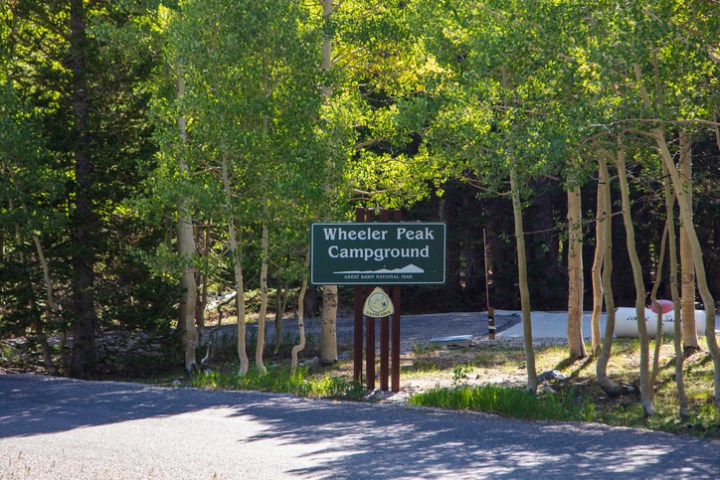
Camping is undoubtedly one of the best ways to immerse yourself in nature. And it just so happens that there are five developed campgrounds within Great Basin National Park, such as Grey Cliffs Campground. Each of these campgrounds offers standard tent or RV sites with picnic tables, campfire grills, vault toilets, and tent pads at a rate of $20 per site, per night. Wheeler Peak Campground is the highest elevation campground at nearly 10,000 feet. There are no electric hookups available at any of the sites. Lower Lehman Creek is the only campground open year-round, while the rest are open from mid-May through late October depending on the weather conditions. Remember that water may not be available during the colder months, and advance reservations are recommended; otherwise, sites are first-come, first-serve.
There are also primitive campgrounds for those that crave a truly remote and immersive nature experience. These primitive sites are found at the Snake Creek Campgrounds alongside the Snake Creek River on the southeastern fringe of the park, which can be accessed via Snake Creek Road. You’ll find yourself nestled within groves of aspen trees and admiring the limestone cliffs, all within a short 0.5-mile hike from the parking lot at the end of the road.
Cabins & Lodges

While there are no cabins or lodges located within Great Basin National Park itself, there is a highly rated lodge in the nearby town of Baker for those that would prefer a more comfortable night of sleep than camping would provide. Hidden Canyon Retreat offers large, cozy rooms with modern furnishings that are complete with a kitchenette, satellite TV, and a private bath, and it’s all tucked away within Hidden Canyon.
There’s a little market within the main lodge that offers breakfast, lunch, dinner, snack options, and drinks like water, soda, juice, wine, beer, and more. There is also plenty of wildlife around the retreat such as mule deer, wild turkeys, and golden eagles. You won’t believe the value and quality of this beautiful lodge, but just remember: this retreat operates seasonally and is closed from November through March, so be sure to plan accordingly. There are also a handful of motels and RV parks in the town of Baker if you prefer a more affordable lodging option.
Things To Do In Great Basin National Park
There are incredible underground caves, breathtaking hiking trails of varying difficulty levels, and scenic drives galore within the park. Whatever your flavor of adventure may be, Great Basin National Park has it all.
Hiking In Great Basin National Park

Ancient Bristlecone Pine, the world’s oldest living trees, dot the rugged landscape along some of the higher-elevation hiking trails within Great Basin National Park. There are 12 hiking trails to choose from that range from gentle, low-elevation walking trails like the Mountain View Nature Trail to challenging high-elevation hikes like the Wheeler Summit Trail. You can also explore the Alpine Lakes Loop, which passes by the stunning Stella Lake with Wheeler Peak looming majestically in the background. You may be surprised to discover so much greenery in such an arid region.

Lehman Caves

One fascinating fact about Great Basin National Park is that it contains over 41,000 acres of karst — a landscape that is capable of housing caves. There are 40 known caves within the park, the most famous of which is the Lehman Caves. There are daily ranger-led cave tours that explore this massive underground labyrinth of stalactites and stalagmites, transporting you to what feels like another world. You’ll learn a great deal about this elaborate cave system while on the tour, including the fact that more than 10 new species have been discovered in these caves just in the last 15 years.
There are several cave tours offered, some of which are only offered during the summer, but all are worthy of experiencing. The longest tour is the Grand Palace Tour which lasts about 90 minutes. This tour passes through the Gothic Palace, Music Room, Lodge Room, Inscription Room, and Grand Palace rooms within the Lehman Caves. This tour is not offered in the wintertime, but the closest tour experience to this would be the Lodge Room tour, which explores about a half-mile of the caves and is offered year-round. Ticket prices range from $4 per child to $15 per adult, depending on which tour you select. Be sure to reserve your tours in advance because same-day ticket sales are unlikely due to popularity.

One of the most magical experiences within the park is the Wheeler Peak Scenic Drive. You’ll begin this scenic drive on Nevada Highway 488 within the Great Basin Desert and continue until you enter the park, and then you’ll branch off to the right on Wheeler Peak Scenic Drive. From there, you’ll pass through multiple ecologic zones over the span of 12 miles as you ascend about 4,000 feet in elevation. While the drive is beautiful at any time of year, the best season to enjoy the experience is during autumn when the golden aspen trees bathe the landscape in vibrant yellow hues.
If you’re looking for rivers or streams to fish or explore along your drive, Lehman Creek runs parallel to the road during the first section of the drive. As you continue onward and upward, you’ll pass several picture-worthy overlooks such as the Mather and Wheeler Peak overlooks. This is also the same drive you’ll take if you want to reach either the Wheeler Peak Campground or the Wheeler Peak Summit Trailhead. Stella Lake, Teresa Lake, and Blue Lake can all be accessed from the Bristlecone Parking Lot at the end of the road. As the name suggests, it is from this lot that you’ll be able to walk and view the ancient bristlecone pine groves. While you’re at it, take the Bristlecone Pine Glacier Trail, where you’ll also come across Nevada’s only glacier!
Stargazing
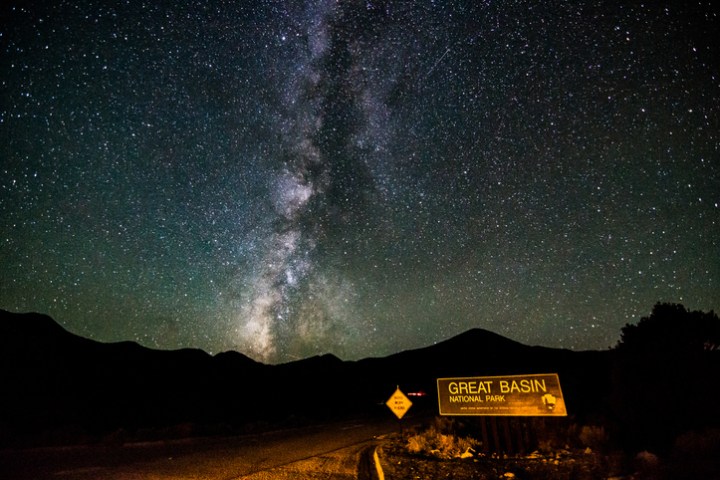
Prepare to be dazzled by the night sky at Great Basin National Park. Stargazing enthusiasts and astrophotographers alike will find that the park offers some of the darkest skies in America. The Milky Way is most visible from February to October on nights when very little moonlight is present to detract from the starry sky, such as during a New Moon. With no light pollution from nearby cities to dull the light from the stars, you’ll be amazed by how expansive the midnight sky feels. Set up your camera on a tripod or simply lay under the stars and soak in the wonderous cosmic display.
Great Basin National Park Wildlife
Wildlife is abundant throughout Great Basin National Park. This might come as a surprise given the seemingly harsh environment, but the desert is teeming with life. Among the animals that inhabit the Great Basin Desert are bighorn sheep, coyotes, mountain lions, mule deer, sagebrush voles, snakes (including rattlesnakes), lizards, fish, bats, ringtail cats, a wide variety of birds, and even native species such as the pygmy rabbit.
The wide variety of wildlife that exists within Great Basin National Park is owed in part to the array of ecological zones that span the park, from desert valleys to mountain peaks and everything in between. While there are no guarantees you’ll spot wildlife within the park, you’re most likely to encounter them during the morning and evening hours. Please remember to keep a safe distance and never approach wildlife. Please respect the environment, don’t attempt to feed any animals, and simply enjoy them without disturbance.
Without question, Great Basin National Park is one of Nevada’s most surprising and extraordinary natural wonders. There is something truly entrancing about the desert; it offers a rugged sort of beauty, where weathered trees, hardy foliage, and resilient wildlife thrive. Hopefully, now you’re motivated to pack your bags and put this underrated national park on your bucket list where it belongs. But before you hit the road, be sure to visit the National Park Service’s website to learn more about the park, and go ahead and download a park map to have handy for your trip.
Need To Know Information About Great Basin National Park
Accessibility: Great Basin National Park offers great benefits to Access Pass holders, and there are many activities that can be enjoyed within the park by visitors with disabilities. Access Pass holders receive 50 percent off of Lehman Cave tours and campsite fees. There are designated parking spaces at every parking lot in the park with ramp access, and all public restrooms and visitor centers are accessible. There are three campgrounds with accessible sites: Upper Lehman Creek, Wheeler Peak, and Baker Creek campgrounds. These sites are first-come, first-serve. Additionally, service animals are always welcome, and assisted listening devices are available for any ranger-led programs.
Pet-Friendly: While pets are allowed at Great Basin National Park, there are some limitations. For example, pets are not allowed in the Lehman Caves or at any evening programs that may be offered. If pets are leashed, they may be walked on the Lexington Arch Trail or on the trail between the Great Basin Visitor Center and the town of Baker. Leashed pets are also allowed at the campgrounds, along roads, and in front of the visitor centers.
Parking: There is overnight parking at any of the six campgrounds (weather permitting) for campers who’ve reserved a site. There are also day-use parking lots at the picnic areas, visitor centers, and trailheads throughout the park.
Seasonal Access: The park is open year-round, but Wheeler Peak Scenic Drive closes periodically in the winter or during inclement weather, especially if ice or snow is present. Some higher-elevation hiking trails and campgrounds are also closed during the winter, but Lower Lehman Campground is open year-round as weather conditions permit.
Cost: There is no entrance fee for Great Basin National Park! However, annual America the Beautiful National Parks & Federal Recreational Lands Passes are sold at the Lehman Caves Visitor Center. The Lehman Cave tours are available for an added fee ranging from $4 per child to $15 per adult (depending on which cave tour you select) and should be reserved in advance. Campsite fees are $20 per site, per night.
OnlyInYourState may earn compensation through affiliate links in this article. As an Amazon Associate, we earn from qualifying purchases.




